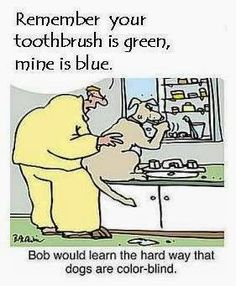With summer in full swing, people and pets are out and about enjoying the warm weather. But while the promise of summer fun gets us outdoors, it can also pose a health threat to your furry friends. In a recent post, we touched on things like mosquitoes, ticks and heat stroke that can occur when the summer months roll around. In this post, we’ll explore a bit more the potential hazards that animals face during this hot season.
Pets Don’t Sweat Like Us
It’s a common misconception that pets don’t sweat, hence why they pant. The truth is that they do sweat, but just a bit differently from us. While human have sweat glands all over our bodies, animals have considerably fewer and tend to sweat mostly from the areas not covered by fur, like their nose and the pads of their feet. However, since they are mostly covered in fur, this doesn’t leave them much opportunity to sweat away the heat like we do. When going outside, keep in mind that however hot you are, your pet is feeling considerably hotter. Bring along plenty of water for your pet and make the effort to find shaded areas for them to relax in.
Hot Pavement and Paws
We’ve all seen the videos of people cooking eggs on hot pavement to display how hot it is outside. So imagine how that must feel on the bare paws of your pet. Yes, their paws are rough to allow them to travel over all sorts of surfaces, however, that doesn’t mean they’re immune to heat. It’s unfortunately all too common for people to accidentally neglect their pet’s paws. To help prevent potential burns, keep to natural grass for walks, go outside either early morning or in the evening or even consider investing in booties for your pet. You can also test the surface yourself with the back of your hand. If you are able to keep your hand on the ground for seven seconds, then the surface is safe enough for your pet.
The Dangers of Hot Cars
At this point, this should go without saying, but…NEVER leave a pet in a car when it is hot outside. Even if you think you’ll only be gone a moment, you can’t anticipate if you’ll end up being gone longer and in that time bad things could happen to your pet. According to the American Veterinary Medical Association, it only takes 10 minutes for the temperature in your car to rise 20 degrees, and the temperature in your car can rise up to 40 degrees hotter than the temperature outside. On a 90-degree day, that means your pet is sitting in 130 degrees! And don’t forget that your pet doesn’t sweat like we do, so while such a high temperature would be awful for you, it’s downright dangerous for them.
Recognizing Heat Stroke
If a pet is overheated and hasn’t had access to a cool place or ample water, they run the risk of suffering heat stroke. Be sure to be on the lookout for possible signs of heat stroke that include excessing panting, excessing drooling, vomiting, mental dullness, diarrhea or red gums. They can also pass out from heat stroke just like humans can. If you begin noticing these signs, get your pet to a climate-controlled area as soon as you can and give them plenty of cold water to drink. If available, hose your pet with cold water or get them into a cold bath or shower. Be sure to take their temperature every few minutes until it drops below 103 degrees. And of course, get them to your vet ASAP.
There’s No Place Like Home
It’s tempting to want to take your pet with you everywhere you go. After all, who wants to be gone from their pets for any amount of time! However, as the dog days of summer are rolling around, it may be in your pet’s best interest to leave them at home. As long as your home is properly secured for your pet, they’ll fare much better in an air-conditioned house than they will in 95-degree heat. Put their needs first and consider leaving them in a climate-controlled environment instead of subjecting them to heat that they can’t regulate as well as we can.
The summer can be a great time to have fun with your pets. We never want to discourage you from engaging in outdoor activities and enjoying time with your loved ones. Just make sure that when you do go outside, you take into account the needs of your four-legged best friends and make certain you are aware of how their bodies react to the heat. By being proactive, you and your pets can have a great summer and create wonderful memories.







